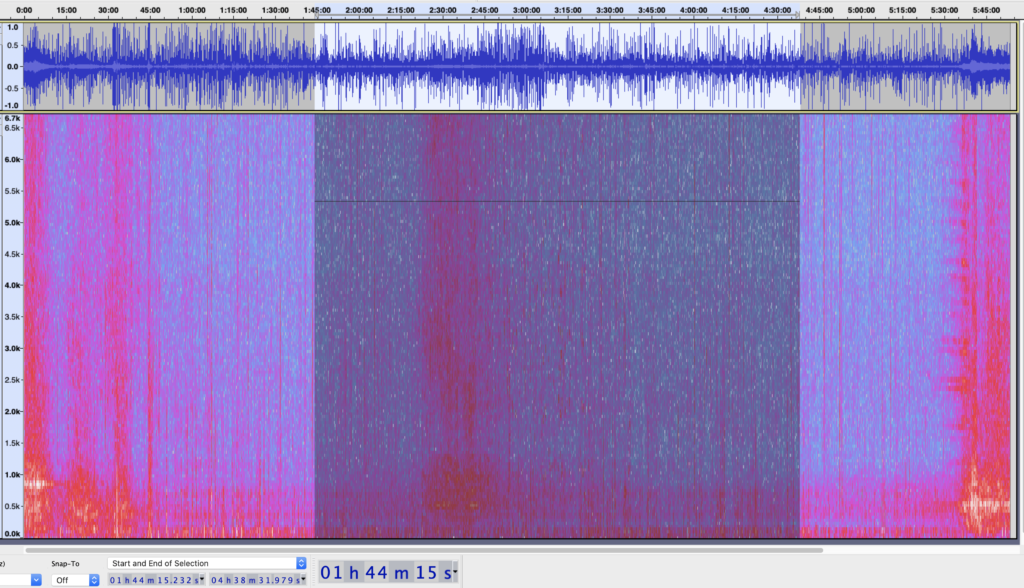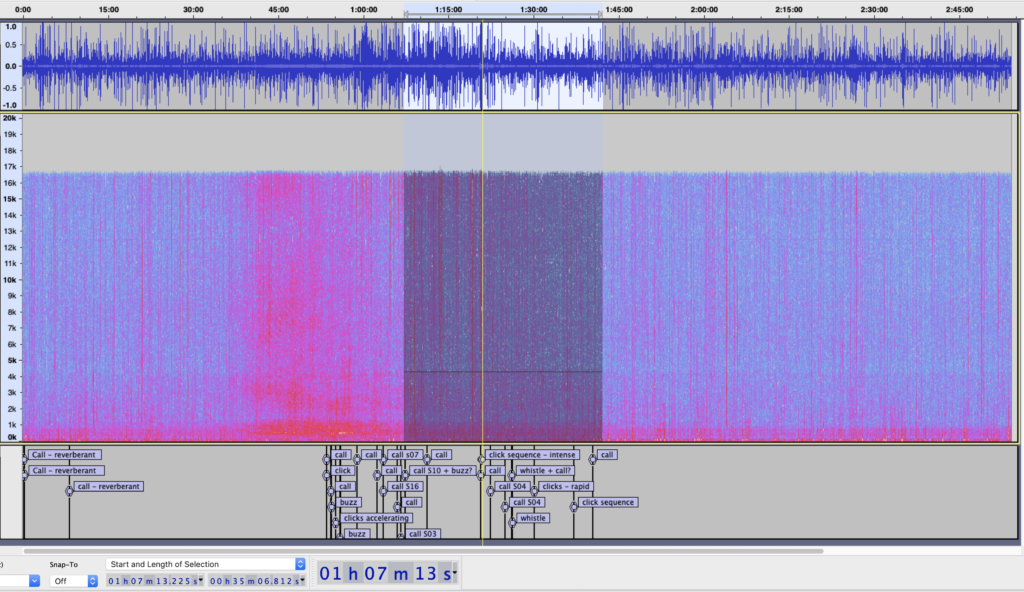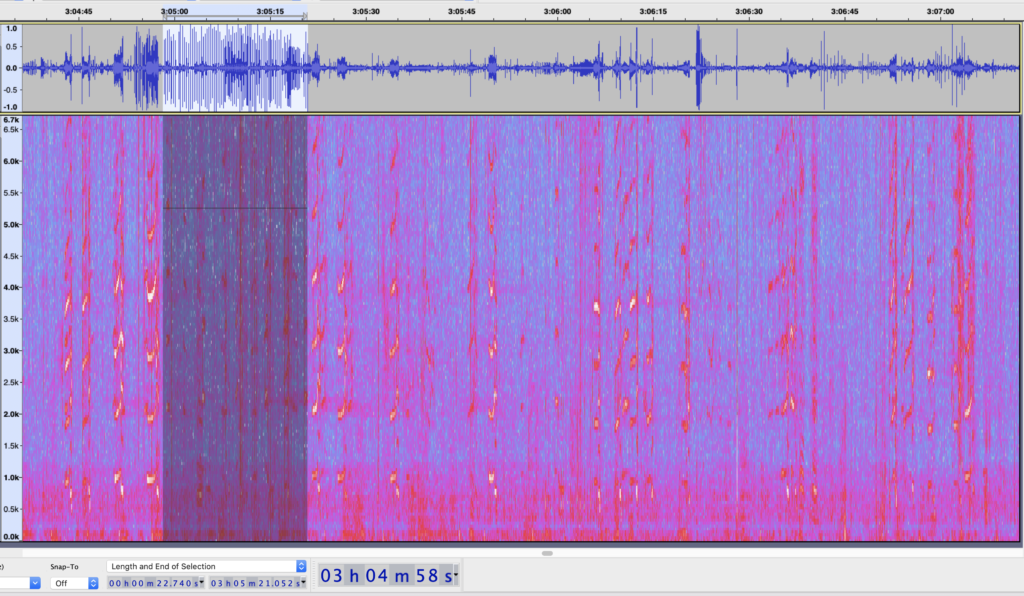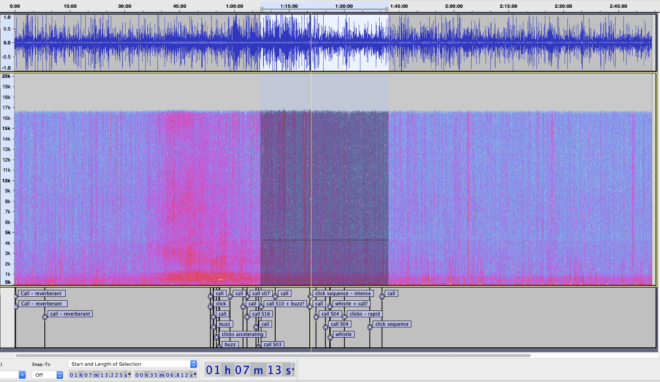After their first foray of the Southern Resident Killer Whales into Puget Sound this fall over the last couple days, J pod was recorded in Haro Strait during the pre-dawn hours this morning (Wednesday 9/30/2020). It appears these endangered orcas are now heading to Canada in search of Fraser River Chinook after foraging within Puget Sound, likely on coho and chum salmon runs. We know this thanks to one of the best-coordinated efforts yet of Orcasound listeners and Orca Network sighters around Admiralty Inlet and Possession Sound, and a sequence of consistent acoustic detections across all 3 locations of the Orcasound hydrophone network.
Last night their calls were heard by citizen scientists on the Orcasound hydrophones in Admiralty Inlet — both at Bush Point on Whidbey Island at ~18:00 and at the Port Townsend at ~19:00. (Thanks to Orca Network for hosting the Bush Point node and fixing it just in time for this exciting event, and to the Port Townsend Marine Science Center for keeping their hydrophone running all these years!) The Washington State Ferries reported (via Orca Network) that they observed orcas leaving Puget Sound in the northbound shipping lanes, just outside of Keystone around 19:30.

While many expected J pod to return to the Pacific to forage on the outer coast of WA and B.C., another possibility was that they could turn north into either Rosario or Haro Strait. Normally Southern Residents travel at a mean speed of about 5 knots (2.5 m/s), but while in Puget Sound they moved more slowly, at about 3 knots (1.5 m/s) possibly due to having new borns in tow. The distance from Admiralty Inlet to the next Orcasound hydrophone at Orcasound Lab in Haro Strait is about 60 km as the crow flies (and there isn’t much land in the way of orcas en routes, so that’s about the shortest or “least cost” path for J pod). At regular speed that would take them ~6.5 hrs; at their slower speed of 1.5 m/s it would take ~11 hours. Given that they passed Port Townsend at around 19:30, the range of their arrival times near the Orcasound Lab hydrophone would be between 2 a.m and 6:30 a.m.
So, it is pretty exciting that the Orcasound Lab hydrophones recorded these wonderful sounds, starting at around 3:30 a.m.! Thanks to the automatic archiving of the Orcasound live stream in an open S3 data storage “bucket” the continuous recording shows that SRKW calls, clicks, and whistles were audible for almost 3 hours — from about 2:14 through 05:08 a.m. Pacific time (1:44:15-4:38:31 within the original 6-hr recording that started at 12:30:19 Pacific, corresponding to a start time for a labeling candidate of 02:14:34=00:30:19+01:44:15).

However, the section with high signal:noise ratio lasted only a half hour, from about 03:22-03:57, starting after noise from a passing vessel faded out and lasting until the orcas moved beyond “easy” detection range — likely to the north based on subsequent sightings in the Canadian Gulf Islands today.

An interesting part of the central part of the recording (when the orcas were likely at their closest point of approach) is a section that contains many clear echolocation clicks. At one point, at least 75 clicks are heard in 22.75 seconds, corresponding to a mean click rate of 3 clicks/second. Many of the clicks come in a remarkably periodic sequence (inter-click interval of ~0.3 sec).

There are also good examples of click sequences that change rapidly in received amplitude, probably indicating that the source orca was sweeping its echolocation beam over the hydrophone’s location. These sweeps help build a listener’s intuition about the focused, directional nature of a killer whale’s echolocation beam.
Overall, the recording from Orcasound Lab will provide a treasure trove of training and testing data for the on-going development of machine learning algorithms designed to detect SRKW signals. Not only does this recording contain a LOT of calls (including S1, S3, S4, S7, S10 calls and even a few S16 calls — suggesting that K pod members may have been present, too), it also has whistles, and a wide variety of echolocation clicks. It also has a wide range of signal:noise, including signals masked by a passing vessel, and by the ambient noise in Haro Strait when the orcas are approaching and receding from the hydrophone.
Note:
Unix date-time stamp for this event in the Orcasound open data Amazon S3 bucket is 1601451019 and the location slug is orcasound_lab . The start time of the 6-hour recording session was thus Wednesday, September 30, 2020 12:30:19 AM GMT-07:00 DST. Learn how to access these open data via the Orcasound Github orcadata accesss.md file.

Hi! I’m trying to download the “Click sequence, .mp3 format” file but the “3 dots” to the right only control the playback speed. I cannot ding a “download” option. Please help. Thank you.
Hi Shari,
On most browsers, you should be able to right-click those three dots and see a download option. I just checked the HTML5 audio elements in the post here and see “Download” above the playback speed in the Chrome for Mac UI). Maybe try a different browser?
Good luck,
Scott